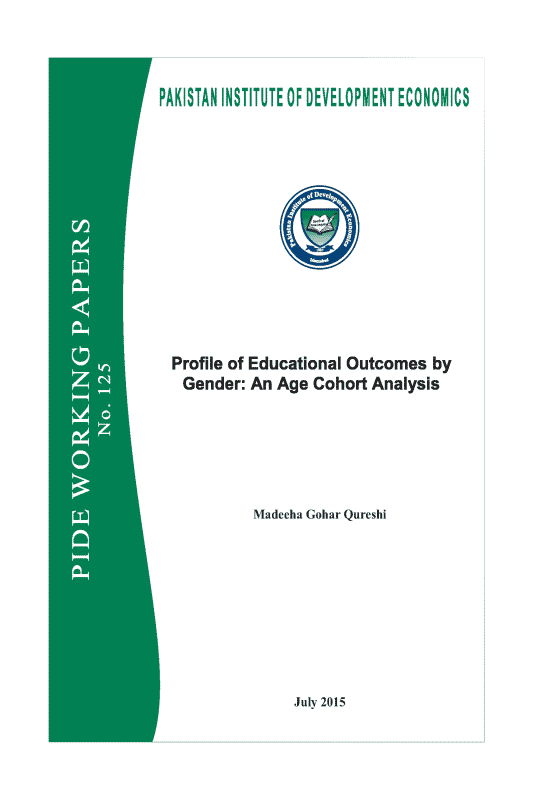
Pakistan Institute of Development Economics
- Home
Our Portals
MenuMenuMenuMenuMenuMenuMenu - ResearchMenuMenuMenuMenuMenuMenuMenu
- Discourse
- The PDR
- Our Researchers
- Academics
- Degree Verification
- Thesis Portal
- Our Portals
Profile of Educational Outcomes by Gender: An Age Cohort Analysis
How do we achieve target of universal primary education in Pakistan and how do we keep students that have enrolled to continue with schooling to higher levels are the most important policy questions which can only be effectively answered if one is well-informed about the trends in educational outcomes and of proportion of students indulging in continuation or discontinuation of schooling at critical transitions say from primary to secondary benchmark and higher. Hence an accurate description of patterns in educational achievements is crucial for both understanding the dynamic of low human capital stock build up and also for finding ways of getting out of such low-educational trap. In this context gender discrepancy in human capital building process plays an important role and in this paper an attempt is made to examine in-depth how gap in attained schooling measures for males and females at different levels of education have evolved in Pakistan through analysing the varying behaviour over age cohorts by gender. Further not only patterns of gender gap in achieved education are formulated for overall economy and across rural-urban divide both at national and provincial level but a rough estimate for attrition or continuation in studies as one move from lower to higher educational level for males and females within age cohort 15–19 are also evaluated so as to capture in totality the gender dynamics in education sector. Our findings show that though there is conspicuous deviations in percentage shares of population with completed grades by gender in favour of the males and against females at all levels of education from basic to higher studies within each province (only exception to this trend is at tertiary level of education within urban Punjab where females are in slightly higher proportion), however the analysis by age cohort show that as one move from oldest to youngest age group with individuals belonging to attained education from primary to tertiary level of education, there is a present a tilt towards university level of education for females within their own attainment distribution indicating that there is emerging a tendency of break in patriarchal force against female education. Further such tendencies are more apparent in urban parts of Pakistan and that too from mainly Province Punjab.



